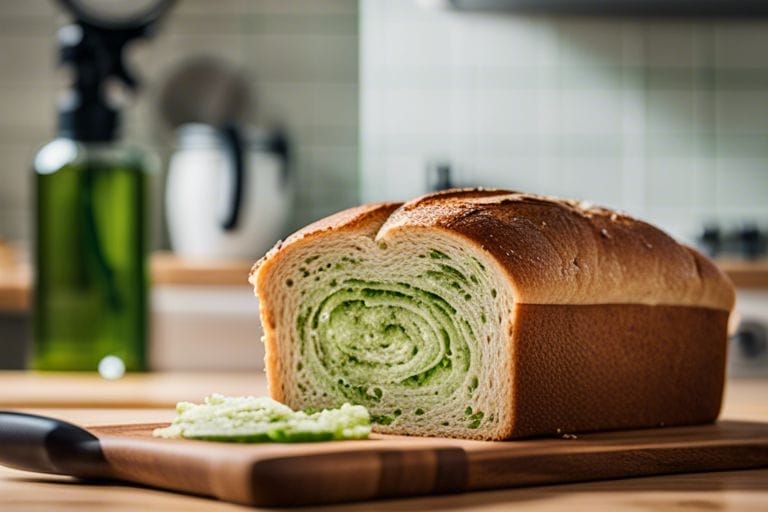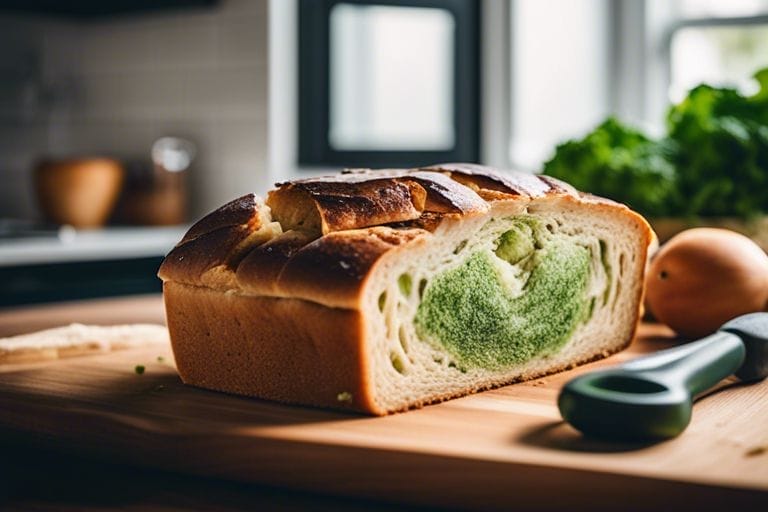Have you ever found mold on your food and wondered if it’s still safe to eat once it’s been cooked? Mold can be a tricky thing to navigate when it comes to food safety, and it’s important to understand the risks involved. While some types of mold can be safe to eat after being cooked, not all molds are created equal. In fact, some molds can produce toxins that can be harmful even after cooking. It’s crucial to be able to identify these dangerous molds and know how to handle them properly in order to protect your health. In this blog post, we will cover the ins and outs of mold safety, including which molds are safe to eat, which molds are dangerous, and how to minimize your risk of consuming harmful mold.
Key Takeaways:
- Cooked mold may not always be safe to eat: While cooking can kill some types of mold and deactivate their toxins, it may not eliminate all health risks associated with consuming contaminated food.
- It is important to use caution when handling moldy food: Even if you remove the moldy portion of the food, invisible mold spores and toxins can still be present, so it’s best to err on the side of caution and discard moldy food.
- Prevention is key: To avoid consuming mold-contaminated food, it’s important to properly store and handle perishable items, regularly inspect your food for signs of mold, and follow safe food handling practices.
What is Mold?
Any mold is a type of fungus that grows in the form of multicellular filaments called hyphae. Mold is a natural part of the environment and is commonly found outdoors as well as indoors. It can grow on plants, food, and dry surfaces.
Types of Mold Commonly Found in Food
When it comes to food, there are several types of molds that can commonly be found, including Penicillium, Aspergillus, and Cladosporium. These molds can appear in various colors, such as green, white, or black, and may have different textures. The U.S. Department of Agriculture (USDA) states that some molds can produce mycotoxins, which are toxic substances that can pose health risks if consumed in large amounts.
- Penicillium: Often appears as blue or green mold and is commonly found on bread, cheese, fruits, and nuts.
- Aspergillus: Typically found on peanuts, corn, and grain products. It can produce dangerous mycotoxins.
- Cladosporium: This mold can appear on fruits and vegetables and is often black or green in color.
- Mycotoxins: Toxic substances produced by certain molds that can cause adverse health effects when consumed.
- U.S. Department of Agriculture (USDA): Provides guidelines and information on food safety and handling, including mold on food.
The presence of certain molds on food can indicate that it is spoiled or past its shelf life and should be discarded.
Mold Growth – Factors and Conditions
Understanding the factors and conditions that contribute to mold growth on food is essential. Moisture, temperature, and nutrients are the primary factors that enable mold to thrive on various food surfaces. Foods with high moisture content, such as fruits and vegetables, are particularly susceptible to mold growth. Air, pH levels, and light exposure also play a role in mold development. Knowing how these factors contribute to mold growth can help you prevent the proliferation of mold on your food.

Health Implications of Mold Consumption
Assuming you consume food that contains mold, there are several potential health implications to consider. Mold can produce mycotoxins, which are toxic substances that can cause a range of health effects when ingested. Additionally, even the act of consuming moldy food can lead to adverse reactions in some individuals. It’s important to understand the potential risks associated with eating moldy food and the specific health implications that may result.
Mold Toxins and Their Effects
Mold toxins are produced by certain types of mold and can be present in moldy food. When you ingest food contaminated with mycotoxins, they can cause a range of health effects, from mild symptoms to more serious issues. Some mycotoxins are known to be carcinogenic, while others can affect the central nervous system, immune system, and gastrointestinal system. The effects of mold toxins can vary depending on the type and amount of mold present, as well as individual susceptibility. If you consume food that contains mold toxins, it’s important to be aware of the potential health risks and monitor your symptoms closely.
Risks Associated with Eating Moldy Food
When you consume food that has mold on it, you are putting yourself at risk for a range of potential health issues. Eating moldy food can lead to allergic reactions, respiratory problems, gastrointestinal issues, and other health concerns. In some cases, consuming moldy food can even lead to more severe health complications, especially for individuals with compromised immune systems. It’s crucial to be cautious about the potential risks associated with eating moldy food and to prioritize consuming only safe, mold-free food items.
Mold in Cooking and Food Preparation
Now that you know about the safety of cooked mold, you might be wondering about the mold that grows during the cooking and food preparation process. Mold can grow on various foods, including bread, cheese, and even fruits and vegetables. The general rule of thumb is that you should never eat foods that are visibly moldy, as they can contain harmful toxins. If you’re curious about which moldy foods are safe to eat, you can check out this article on What Moldy Food Is It OK to Eat? – Insider for more details.
Can Cooking Kill Mold?
When it comes to cooking with moldy ingredients, you might be wondering whether the heat from cooking can kill the mold and make the food safe to eat. In most cases, cooking can kill mold, but it’s important to note that some molds produce heat-resistant toxins that can remain in the food even after it has been cooked. So while cooking can eliminate the visible mold, it may not remove the harmful toxins. Therefore, it’s crucial to exercise caution and properly inspect your food before consumption.
Best Practices to Avoid Mold Growth
If you want to avoid the potential dangers of mold in your food, there are several best practices you can follow to prevent mold growth. Always make sure to store your food in airtight containers, keep your refrigerator clean and at the proper temperature, and inspect your food for any signs of mold before consuming it. Additionally, avoiding buying more perishable foods than you can consume in a reasonable amount of time can help prevent mold growth in the first place.
Dealing with Moldy Food
Not all moldy food has to be immediately thrown away. However, it’s important to understand when it’s safe to salvage and when it’s best to discard the food to protect your health.
When to Save vs. When to Discard
When determining whether to save or discard moldy food, there are a few key factors to consider. If the mold is soft, moist, and fuzzy, such as on bread or fruits, it’s best to discard the whole item. Hard, dense foods, like hard cheeses or firm vegetables, can be salvaged by cutting at least 1 inch around and below the moldy spot. However, if the food is highly perishable, like yogurt or soft cheese, it’s safest to discard it. When in doubt, it’s crucial to prioritize your health and err on the side of caution.
Cleaning and Prevention Strategies
After discarding moldy food, it’s important to thoroughly clean and sanitize the area where the food was stored. This includes not only the shelving and containers, but also any utensils or kitchen tools that came into contact with the moldy item. Prevent mold growth in the future by keeping your refrigerator clean and at the appropriate temperature, promptly consuming perishable items, and storing food in airtight containers. Additionally, make it a habit to regularly check for any signs of mold on your food to catch it early.

Is Cooked Mold Safe to Eat? Understanding Mold Safety
Now that you have a better understanding of mold safety, you can make informed decisions when it comes to consuming foods with mold. While cooking can kill some mold and remove its toxins, it is still important to exercise caution. Remember to thoroughly inspect your food for any signs of mold before cooking, and if in doubt, it’s best to discard it. It’s crucial to prioritize your health and wellbeing when it comes to food consumption, so always err on the side of caution when it comes to consuming foods with mold.
FAQ
Q: Is cooked mold safe to eat?
A: In general, it is not safe to eat food that has mold on it, even if it has been cooked. While cooking can kill the mold spores and destroy the mold, the toxins produced by certain molds can remain in the food and cause health problems. It’s best to discard any food that has visible mold on it, as well as any food that has a musty smell or taste.
Q: What are the risks of eating moldy food?
A: Eating moldy food can lead to a range of health issues, including allergic reactions, respiratory problems, and digestive issues. Some molds produce mycotoxins, which are toxic substances that can cause serious health problems when ingested. Ingesting these toxins can lead to symptoms such as nausea, vomiting, diarrhea, and in severe cases, organ damage. It’s important to be cautious and avoid consuming any food that shows signs of mold contamination.
Q: How can I prevent mold from growing on my food?
A: To prevent mold growth on food, it’s important to store food properly and keep your kitchen clean and dry. Make sure to refrigerate perishable foods promptly, store food in airtight containers, and regularly inspect your food for any signs of mold. It’s also important to check the expiration dates on packaged foods and to avoid buying more perishable items than you can consume before they spoil. Additionally, be sure to clean up any food spills and keep areas where food is prepared dry and well-ventilated to prevent mold growth.

